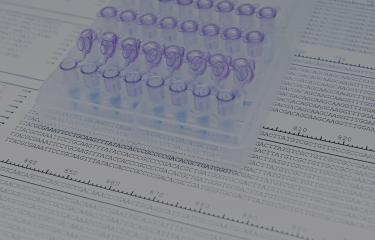Researchers from the Institut Pasteur associated with the CNRS have recently demonstrated the importance of the insertion of small sequences of mitochondrial DNA in the human genome (Public Library of Sciences, 7 September 2004). These insertions are potentially mutagenic and may be connected with serious pathologies. This research could enable the development of new diagnostic tools for cancer and better evaluation of the risks linked to radiation.
Press release
Paris, september 9, 2004
Mitochondria are, in a sense, the power plant of the cell. In animal cells, they are also the only place outside of the nucleus that contains DNA (in humans, the mitochondrial chromosome contains 37 genes). Up to now, it was known that fragments of mitochondrial DNA are present in the nuclear DNA, although the importance of this phenomenon was not fully understood.
Research conducted at the Institut Pasteur by Miria Ricchetti, from the Developmental Genetics and Biochemistry Unit (Institut Pasteur - CNRS) and by Bernard Dujon, from the Yeast Molecular Genetics Unit* (Institut Pasteur - CNRS), analyses this phenomenon, and shows that these insertions are integrated preferentially into genes, which may lead to certain pathologies in humans.
To locate the inserted mitochondrial DNA sequences, called NUMTs (nuclear sequences of mitochondrial origin), the whole human genome was "scanned" (in silico) followed by in vivo analysis in humans. More than 200 genetic fragments of mitochondrial origin were revealed and some have been shown to be present in a part or in all of the individuals analysed. These fragments of mitochondrial DNA are located in nuclear genes, possibly modifying the product of these genes. Furthermore, NUMTs have been associated in the past with pathologies, notably in the dysfunctions observed in patients born after the Chernobyl accident. The present discovery suggests that a larger number of human pathologies could result from the insertion of NUMTs.
For this reason, it is now essential to conduct more advanced investigations on the role of these potentially mutagenic sequences in human pathology.
The researchers are now planning to study the impact of NUMTs in the cases of colon cancer and brain tumours, in which certain genes targeted by the NUMTs have already been identified. This research could lead to more specific methods of diagnosing these cancers.
The researchers are also beginning studies to determine the impact of irradiation in the phenomenon of mitochondrial DNA insertion in nuclear DNA, comparing the frequency and location of NUMTs in normal cells and in cells subject to radiation and other types of stress. This research could make it possible to refine tools for evaluating the risks connected with irradiation.
* Associated with the Université Pierre et Marie Curie
Sources
"Continued colonization of the human genome by mitochondrial DNA": Public Library Of Sciences. 7 September 2004. www.plosbiology.org
Miria Ricchetti, Fredj Tekaia and Bernard Dujon
PloS biology, 2 (9) 1313-1324
Contact press
Institut Pasteur - Press Office
Nadine Peyrolo - 01 45 68 81 47 - npeyrolo@pasteur.fr
Corinne Jamma
01 40 61 33 41 - cjamma@pasteur.fr
CNRS - Press Office
Isabelle Tratner
01 44 96 49 88 - isabelle.tratner@cnrs-dir.fr








